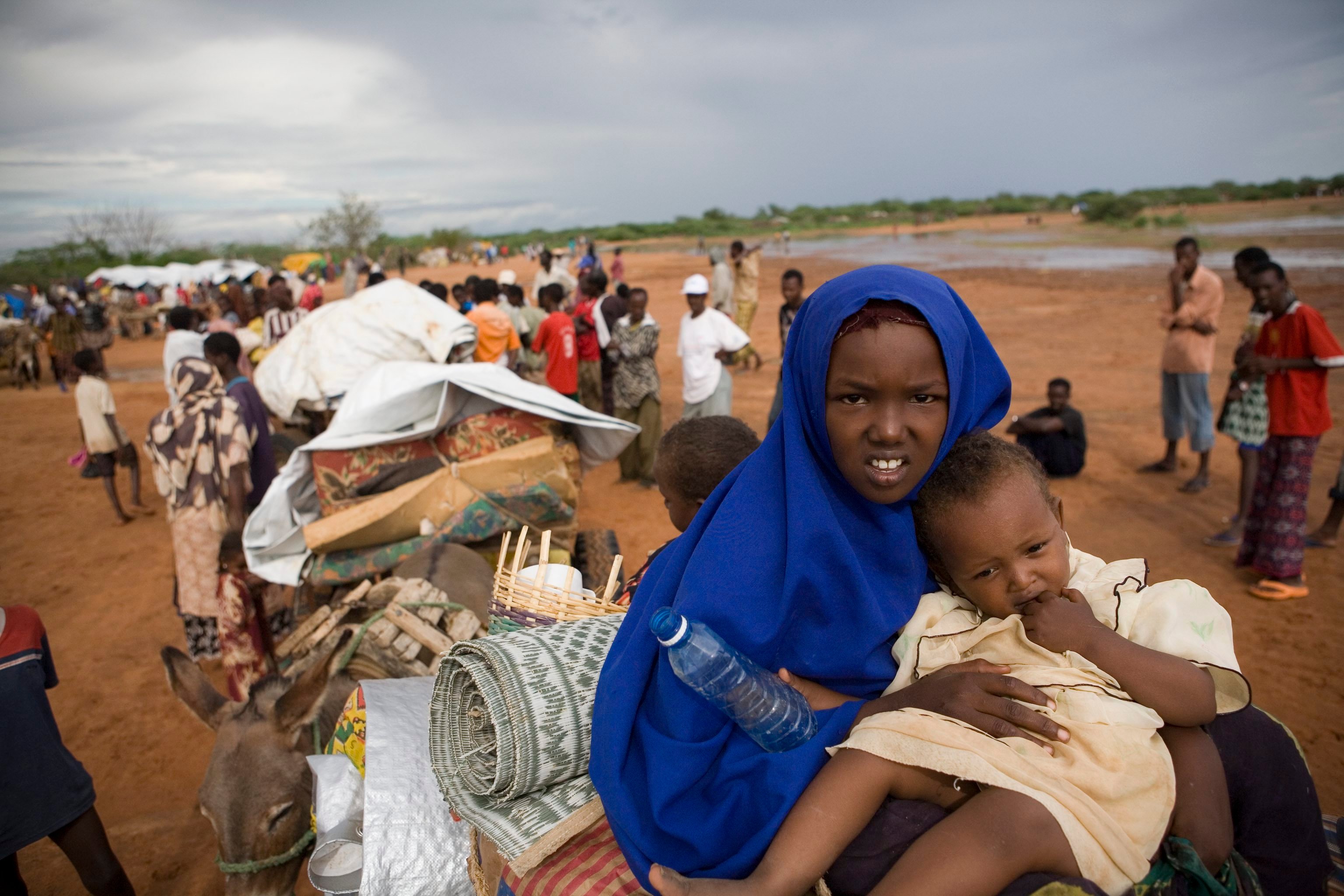Horn of Africa crisis overwhelms aid efforts on the Ethiopia-Somalia border, urgent help needed
Horn of Africa crisis overwhelms aid efforts on the Ethiopia-Somalia border, urgent help needed
UNHCR is warning today that humanitarian efforts to help newly arriving Somali refugees in south-east Ethiopia are at risk of being overwhelmed without a more rapid and robust international response to the drought and displacement crisis in the Horn of Africa.
The High Commissioner for Refugees, António Guterres, visited the Dollo Ado area of south-east Ethiopia on Thursday. He heard from mothers who had lost children during the journey from central Somalia. He witnessed the anguish of people who had been forced to leave sick family members behind. He also spoke to humanitarian workers who deal with the new arrivals, and urged them to speed up help to the most needy.
Since the start of the year, 54,000 Somalis have crossed into this area of Ethiopia. Rates of arrival have accelerated in recent weeks to around 1,700 people per day. Malnutrition rates are alarmingly high among the most recent arrivals. At least 50 per cent of children are either moderately or severely malnourished. Similar rates are being recorded in Kenya.
Humanitarian agencies and the government refugee structure are struggling to cope with the inflow. Currently, the number of arrivals in the Dollo Ado area is outpacing registration capacity. Systems for meeting the food and health needs are close to buckling. Electricity for pumping water to camps is in short supply because overcast skies mean solar panels can't produce enough energy. A new camp in the area, at Kobe, was opened several weeks ago. But it is already nearing its full capacity of 20,000 people. All these problems can be addressed if we receive adequate resources.
During yesterday's visit, the High Commissioner's delegation saw large numbers of new arrivals waiting for registration and ration cards. Most of the newcomers are from the Bay region of Somalia, to the west of Mogadishu. In some cases, people were said to have walked for up to 30 days to reach safety in Dollo Ado.
The drought crisis in the Horn of Africa is affecting Ethiopia, Kenya, and central and southern Somalia. However it is in Somalia that its impact has been most pronounced. There, the fall in crop production has led to higher food prices. The situation for the civilian population is further compounded by an offensive by pro-government forces starting in February against Al-Shabaab insurgents near the Kenya and Ethiopia borders.
High Commissioner Guterres told reporters that humanitarian efforts were needed inside Somalia so that people didn't have to leave the country to receive help. However, conflict prevents this from happening.
Kenya
Meanwhile in neighbouring Kenya, some 1,400 new Somali refugees continue to arrive in Dadaab refugee complex every day. Eighty per cent of them are women and children.
Our top priorities are to address the malnutrition and overcrowding in the camps. There is an urgent need for medical staff and nutritional items such as high energy and high protein therapeutic meals. The main challenge is to receive and rapidly stabilize Somali refugees arriving in extremely poor health conditions. Malnutrition rates among Somali children under the age of five arriving in Dadaab are around 30 per cent.
The existing three camps - Dagahaley, Ifo and Hagadera - were initially built for some 90,000 refugees in the early 1990s. They are now hosting four times that number. The new arrivals are pitching tents on the outskirts of the camps. Our teams in Dadaab estimate that some 65,000 Somali refugees live in these makeshift sites. We have been providing emergency health services and temporary shelter, pitching tents, trucking in water and installing more water taps.
We estimate that a quarter of Somalia's 7.5 million population is now either internally displaced or living outside the country as refugees. The drought is compounded by prevailing violence in southern and central parts of the country.
There are now more than 750,000 Somali refugees living in the region, mostly in neighbouring Kenya (405,000), Yemen (187,000) and Ethiopia (110,000). Another 1.46 million are displaced within Somalia.
For further information on this topic, please contact:
-
In Geneva, Andrej Mahecic on mobile +41 79 200 7617
-
In Ethiopia/Kenya on mission, Adrian Edwards on mobile +41 79 557 91 20
-
In Ethiopia, Kisut Gebre Egziabher on mobile +251 911 20 89 01
-
In Kenya, Emmanuel Nyabera on mobile +254 733 99 59 75




